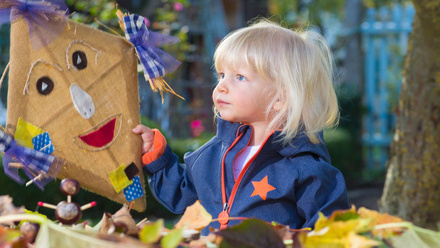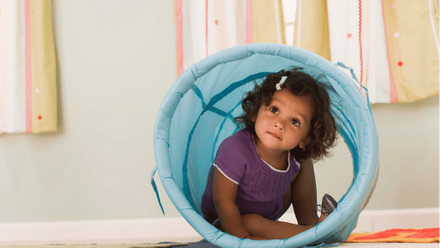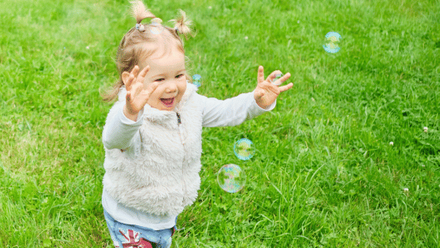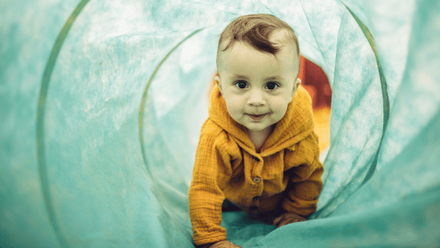Physical development: what are fine motor skills?
When thinking about physical development, images of pre-schoolers running, babies rolling and learning to crawl, toddlers jumping up and down spring to mind. These are all known as gross motor skills – the ‘big’ actions and physical development activities that involve core muscles.
Whilst our gross motor skills are a key aspect of our physical development, paying attention to the formation of our finer skills and minute movements is essential for well-rounded physical aptitude in all areas.
In this article, we’re going to explore fine motor skills – what they are and how we can encourage their development through early education and care.
What are fine motor skills?
Fine motor skills are all about the movements made using smaller muscles, mostly in the hands and upper arms, that require a heightened level of control and precision. For most activities, this also draws upon visual motor skills and acute hand-eye coordination to get every part of the body working together towards on specific area and goal.
Fine motor skills play an important part in everyday tasks that we take for granted. Like now, if you are reading this from the Institute website on your mobile, you’ve used fine motor skills to scroll through and click small buttons to navigate your page. If from a desktop, you’ve typed on a keyboard using a range of hand-eye coordination skills and fine motor engagement.
For young children, fine motor skills can be used in a variety of ways as they learn to discover the world around them. This might look like…
-
fitting together smaller objects into specific places, like jigsaw pieces
-
opening locks on a sensory board
-
pressing buttons and switches on electronic toys
-
holding pens, crayons or finger painting
-
using cutlery at mealtimes or drinking from a cup
-
opening and closing boxes with lids and caps
-
getting dressed, navigating zips and Velcro.
In the modern western world there is a trend to emphasise academic development of children, whereas there is far less emphasis on physical activity. Children are supported and encouraged when they try to be physical during early childhood but this is limited later when formal schooling is starting (Palaiologou, 2021).
Developing strong and precise fine motor skills in the early years paves the way for children to continue to thrive through all areas of their wider growth. From their self-care (e.g., being able to hold a knife and fork), to their independence (e.g., getting dressed and pouring drinks successfully), and their later academic progression when learning to form graphemes, fine motor skills make up an undervalued proportion of physical activity.
But where do fine motor skills come from? How do children develop such precision in coordinated movements when they are still learning to put one foot in front of the other? Gross motor skill development is intrinsic to successfully implementing fine motor abilities. As early education and care professionals, we need to ensure children can walk before they run or write in this case!
Have you ever written for a long time, perhaps in a school test or a GCSE exam, where the timer ticks down as you frantically scribble for the final sentences, and felt a dull ache coursing through every finger, burning through your upper arm? This is because the development of fine motor ability and the maintenance of a high level of control uses not just the muscles in your hand, but also those in your upper arm.
So, when it comes to thinking about how we can support toddlers with their pencil grip, we need to be tracing our effrots back to helping them to build strong upper body strength. Activities that involve gross motor skills like driving trikes and climbing help to develop this muscle strength that is crucial for effective progression of fine motor skills later on.
How do we develop fine motor skills?
Babies (zero-two years)
The growth and development of a newborn baby in the first 24 months of life is incredibly varied and their fine motor skill progression is no different. From discovering that they can wriggle their fingers to learning to pass items to others, a baby’s physical development sees a revolution through the first two years of life.
- Encourage babies to reach for new objects, rather than passing them directly to them to develop upper body strength as well as fine motor skills to grasp.
- Play games that promote passing objects to others to develop hand-eye coordination and a controlled ability to release objects.
- Support babies to use cutlery. For children who are unable to feed themselves yet, give them an additional utensil to hold and interact with whilst the caregiver ensures they take in food.
Toddlers (two-three years)
Children aged two and upward are on the move! Encouraging gross motor skills that support upper body strength is helpful for establishing greater control throughout fine motor movements.
- Utilise interests in a variety of mark-making techniques, from drawing in sand to colouring with pens and pencils and peeling sticker sheets apart.
- Give children the independence to help more with activities requiring an element of control and balance. Pouring drinks, laying the table or handing out paper are all ways that routine fine motor skills can be practised.
- Activities that involve a sense of coordination can be encouraged to develop a greater sense of fine motor control. Try building towers with bricks that do not interlock to practise these skills in a fun and engaging way.
Preschoolers (three years above)
A big aspect of preschool life relates to their ‘school-readiness’ and the transition to primary school. Fine motor skills can be used to promote this by relating activities to their upcoming move.
- Fine motor activities like using zips and buttons are a big part of the independence that starting school holds. Whether it is doing their raincoat up or buttons on a school shirt, encourage children to undertake these tasks themselves.
- Activities that require pincer grips, such as choosing games using tweezers and tongs, are helpful for establishing and strengthening hand muscles that play an important part in pencil grips for writing.
Key takeaways
Fine motor skills are often thought of in isolation from the rest, with association more so to literacy and communication than further physical development. But, in actuality, the development of fine motor skills is intrinsic to wider gross motor skills too. As early education and care professionals, having a thorough understanding of both types of motor skills and how they relate to each other allows for better planning and support for children’s overall physical health during their early years.
Take a look at our other health and wellbeing resources to explore more ways to support physical development throughout early education and care.





